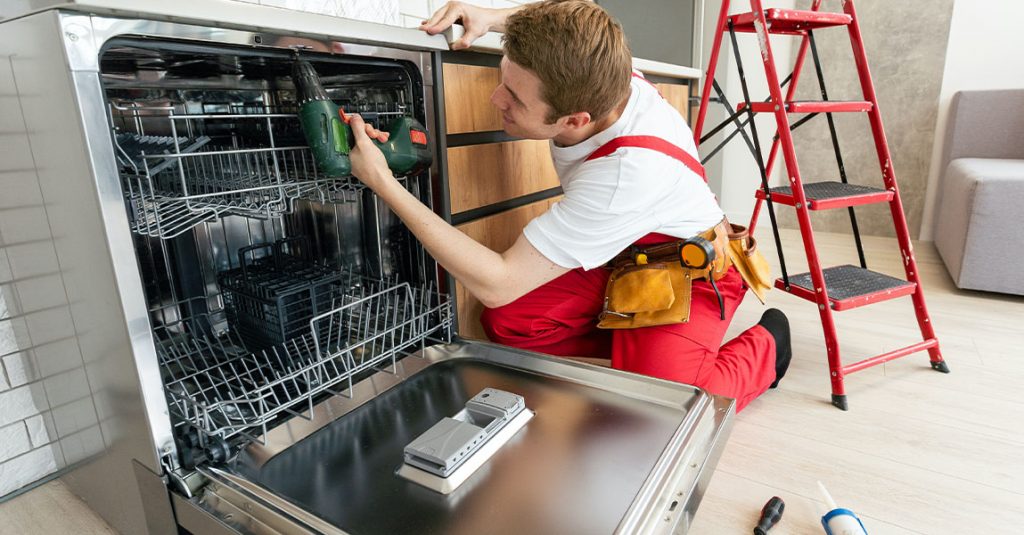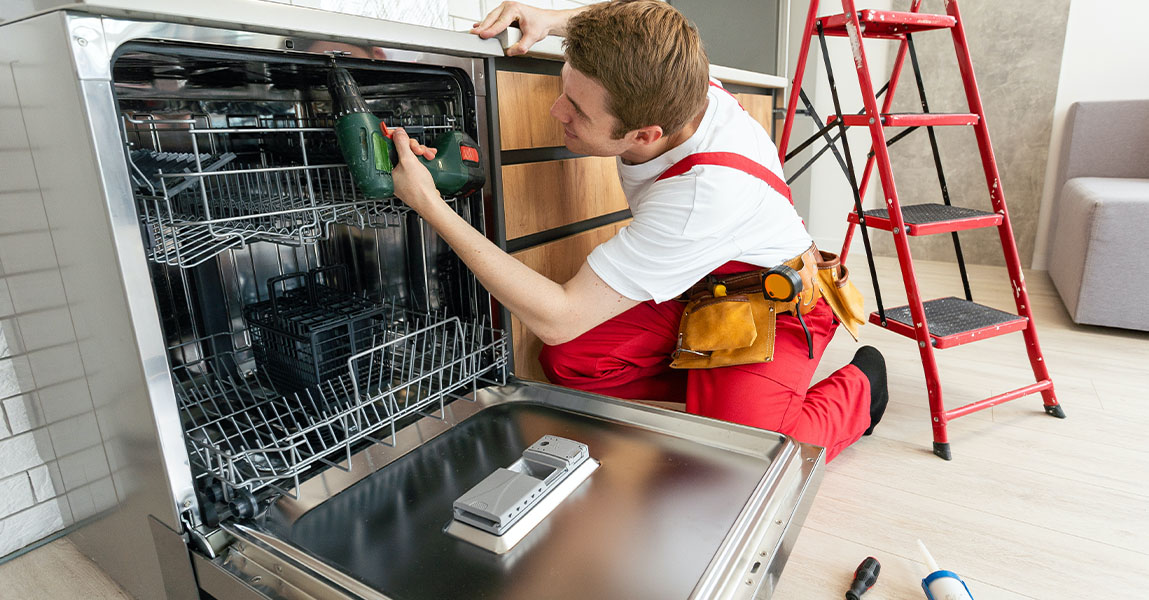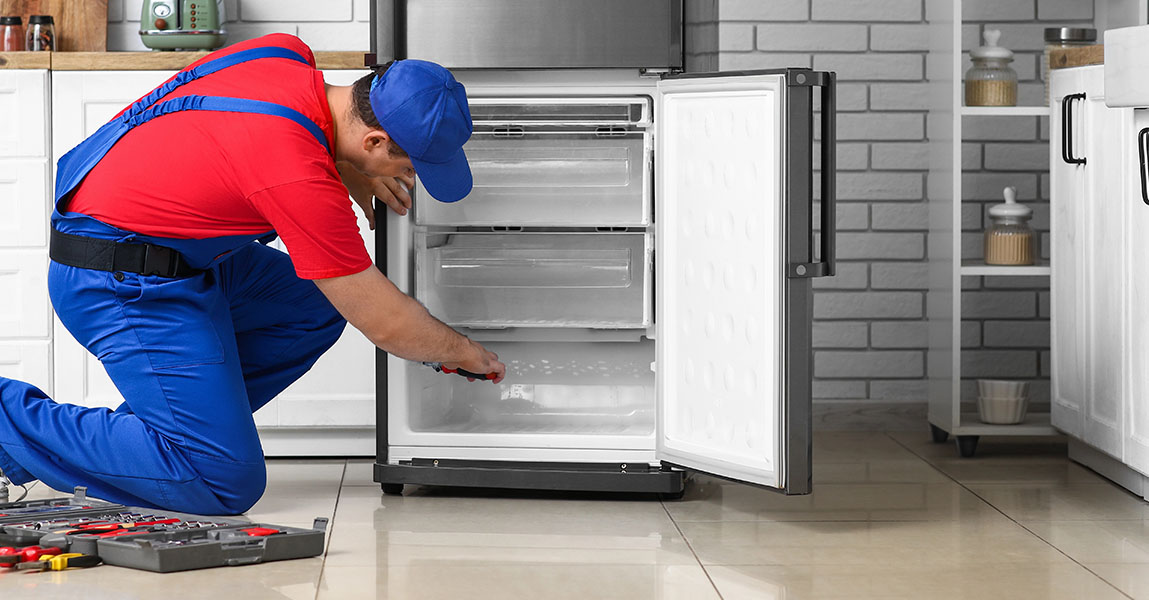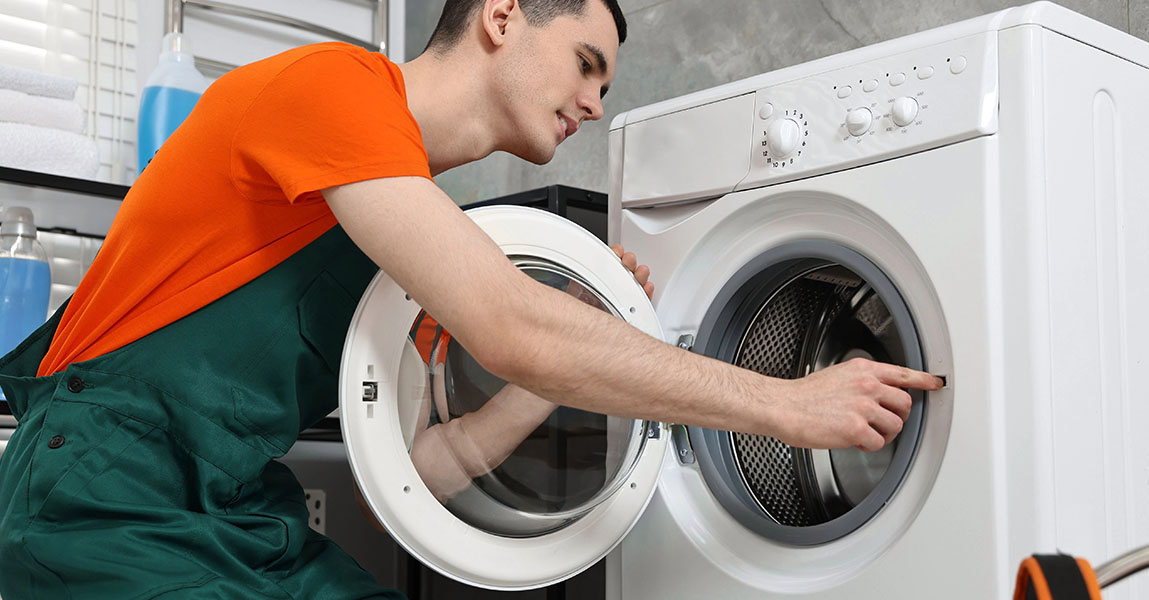When we run a load of dishes, we expect them to come out sparkling clean. Yet many of us pull out glasses only to find cloudy marks or chalky spots. This issue is one of the most common complaints homeowners have with dishwashers. Let’s walk through the reasons behind it and what steps we can take to solve the problem.
Hard Water and Mineral Buildup
Most white spots on glassware are caused by minerals in hard water. When water has high levels of calcium or magnesium, it leaves a residue as the water evaporates. Over time, that residue can create a cloudy film that is difficult to remove. We often notice this problem more in certain neighborhoods because local water supply can vary in hardness.
Using a rinse aid helps reduce these marks by preventing water from drying directly on the surface. Another option is to install a water softener, which lowers mineral content before water enters the dishwasher. If we already have one, checking the salt levels inside the softener is a simple step that can make a big difference.
Detergent Use and Residue
Another reason for spotting comes from using too much detergent. Excess soap does not always rinse away, leaving behind streaks and films. The type of detergent also matters. Powder detergents often perform better with hard water, while pods are designed for convenience but may not adjust well to water conditions.
We should also check that detergent is stored properly. If it has absorbed moisture from the air, it clumps and loses strength. Stale detergent does not clean effectively and leaves residue behind. A simple fix is to keep detergent sealed in a dry space. Adjusting the amount to match the water hardness level can also prevent buildup.
Rinse Aid and Drying Cycles
Many of us skip using rinse aid, assuming it is optional. In reality, rinse aid plays a major role in preventing spots. It lowers the surface tension of water so that droplets slide off glassware instead of drying into cloudy marks. Without it, water evaporates in place, leaving behind minerals and soap traces.
Modern dishwashers are also designed to use less water, which makes rinse aid even more important. We should make sure the dispenser is filled and adjusted to the right setting. Choosing the heated dry cycle rather than air dry also reduces spots, since heat evaporates water more evenly. This small step can noticeably improve results.
Loading Habits and Airflow
Sometimes the cause is as simple as how we load the dishwasher. Glasses placed too close together trap water droplets between them. Utensils stacked in a way that blocks spray arms can also reduce rinsing power. When water cannot reach every surface, residue lingers and shows up as white spots.
Spacing out dishes so spray arms move freely is an easy fix. Placing glasses on the top rack at an angle helps water slide off more effectively. We should also avoid nesting bowls or cups, which creates areas where detergent and water pool and dry unevenly. A quick check of the racks before starting a cycle can prevent many spotting problems.
Filter and Spray Arm Maintenance
Dishwashers rely on clean filters and open spray arms to deliver water pressure. If the filter is clogged with food particles or the spray arms are blocked with debris, water will not circulate properly. This reduced flow makes it harder to rinse away detergent and minerals, leading to spots on glassware.
Regular maintenance keeps these parts working. Removing the lower rack and rinsing the filter under warm water only takes a minute. Checking the spray arm holes with a toothpick or small brush clears away buildup that restricts water flow. Our team at Freedom Appliances often finds that homeowners overlook this simple upkeep, yet it makes a big difference.
Water Temperature and Heating Issues
White spots may also appear if the water is not hot enough. Dishwasher detergent is designed to work best at higher temperatures. If water enters the dishwasher too cold, it cannot dissolve soap properly, leaving residue on dishes. Most manufacturers recommend a minimum of 120 degrees Fahrenheit.
We can test the water temperature by running the kitchen sink hot for a minute before starting a cycle. If the water still feels lukewarm, the water heater may need an adjustment. Another issue could be with the dishwasher’s own heating element, which is responsible for maintaining water temperature. If cycles are running cool, it may be time to look into calgary dishwasher repair services to restore proper function.
Environmental Factors and Glass Quality
Not all spots are caused by the dishwasher itself. In some cases, the glassware has become etched over time. Etching creates a permanent cloudy look that no amount of cleaning will remove. This usually happens from repeated exposure to hot water and harsh detergent. Glassware with a thin or softer finish is more prone to etching.
To reduce this risk, we can use the shortest cycle needed for lightly soiled loads. Switching to a detergent designed for delicate glassware also helps. If etching has already occurred, replacing the affected glasses may be the only option. Recognizing the difference between removable spots and permanent etching is important so we know where to focus our efforts.
Advanced Solutions for Stubborn Spots
Sometimes even with all the right steps, white spots persist. In these cases, trying vinegar or citric acid can help dissolve mineral buildup. Running an empty dishwasher with a cup of vinegar in the top rack clears out deposits from the interior. For tough glass stains, soaking them in a vinegar solution before running a cycle often works.
There are also dishwasher cleaning products made specifically to target hard water buildup. Using these once a month prevents deposits from building up inside the machine. Another overlooked step is making sure the home’s plumbing is free from sediment. If pipes are old or corroded, debris may enter the dishwasher and settle on glassware.
When to Seek Professional Help
We can solve many of these issues on our own, but there are times when the problem points to a larger repair need. If water is not heating properly, if filters continue to clog quickly, or if the machine leaves spots despite all efforts, there may be a mechanical fault. In that case, reaching out for Appliance Repair Calgary ensures a proper diagnosis and repair.
Ignoring the signs can shorten the lifespan of both the dishwasher and the glassware. A technician can test water flow, temperature, and electrical components to find the root cause. This takes the guesswork out of fixing the issue and helps restore consistent results.
Preventing Future Spotting
The best approach is to prevent the problem before it starts. Keeping filters clean, using the right amount of detergent, filling rinse aid regularly, and checking water temperature all play a role. Paying attention to loading habits and avoiding overcrowding also keeps dishes cleaner.
If we live in an area with very hard water, adding a water softener or regularly descaling the dishwasher is a smart long term step. Being proactive saves both time and frustration and keeps glassware looking clear and presentable.
Call to Action
If you are still struggling with cloudy glassware after trying these steps, our team is here to help. We can check for hidden issues and ensure your dishwasher runs the way it should. Reach out today through contact us to get professional support and clear results.
FAQ
Why do only my glasses get white spots and not plates?
Glasses show spots more clearly because of their smooth and transparent surfaces. Plates often hide marks due to texture or color.
Can vinegar damage my dishwasher?
Using vinegar occasionally is safe, but avoid running it in every cycle. Overuse can damage rubber seals over time.
Do dishwasher pods work better than powder?
Pods are convenient, but powder allows us to adjust the amount depending on water hardness. Both can work if used correctly.
How often should I clean the filter?
Cleaning the filter once a month is usually enough for average households. If you notice food particles or odor, clean it sooner.
What is the difference between spots and etching?
Spots are removable mineral deposits or detergent residue. Etching is permanent surface damage that leaves glass cloudy even after cleaning.






